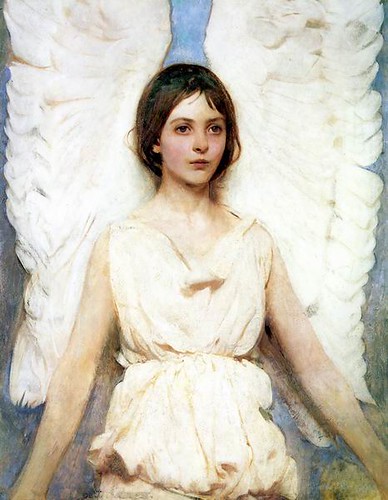Art has always been a popular medium to express personal feelings as
well as reflect the views of comtemporary society. One recurring theme that
always seems to be a popular subject is the portrayal of women and gender roles.
The exhibition Angels and Tomboys at the Newark Museum showcased 19th century
American works involving the depictions of girls during the time period. This
post will discuss the work Making a Train by Seymour Joseph Guy from the
exhibit and and compare it to a modernist painting by Pablo Picasso, Two
Nudes.
 |
| Seymour Joseph Guy, Making a Train. 1867 |
Seymour Joseph Guy's Making a Train is a 19th century American realist
painting. The work depicts a young girl who is becoming aware of her sexuality.
She wears her clothing in a sensual manner imitating a dress worn by a refined
young lady. Her posture also reflects a more mature and elegant pose as she
tilts her head softly downward while gently holding the drapery of her clothing
over her legs. The light emmited from the lamp highlights the innocence of
childhood. This is contrasted with the shadows formed on her body representing
her growth into a young lady. The cabinet on the left of the painting hides a
lone doll representing her abandonement of childhood innocence for the glamour
of adulthood. The theme of childhood was popular during this era of American
painting.
 |
| Pablo Picasso, Two Nudes. 1906 |
Pablo Picasso's Two Nudes shows two women in a seemingly adoring gaze
with one another. However, it can also be interpreted as an adoration of the
self and one's own sexuality. The two figures are drawn very bulky and
distorted perhaps to serve as a metaphor of the figure's distancing from reality
and preoccupation with her own world and sensuality. The angular style of
painting the figures is representative of Picasso's post Rose period way of
illustrating the body.
The similarities between the two paintings can be seen with their
depiction of sexuality. The girl in Guy's Making a Train is adoring her own
sexuality and beauty. The left figure in Picasso's Two Nudes is also adoring
her own sexuality by openly posing nude. The figures in both works also tilt
their heads slightly downward to the right enhancing their sensual expressions.
Both figures are also in a state of self-reflection.
The most notable difference between the two works can be seen in their
style of painting. Guy's work is painted in a realist manner with proportional
forms and usage of chiaroscuro. Picasso's work depicted the figures in a
nonproportional sense with squat figures having flat faces and body structure.
This style was during Picasso's transition into the Cubist style. Another
difference is the depiction of innocence. The girl in Making a Train is
beginning to understand her sexuality and thus is exposing only her upper body.
This is contrasted by the figures in Two Nudes who are adult women standing
fully naked with a confident grasp of their own sexuality. Picasso's Two
Nudes is a forerunner in Modernist style with its rejection of realist
qualities for a focus on form and process rather than tradition.
The woman as a subject of art has always been popular. Within the span
of different art styles, one can always be assured that women will be portrayed
in one way or another by contemporary artists. Whether it is 19th century
American painting or early 20th century modernist work, the subject of women and
gender has always been touched upon and analyzed.
Angels and Tomboys at the Newark Museum:
http://www.newarkmuseum.org/angelsandtomboys.html
References:
Hunter, Sam, John Jacobus, and Daniel Wheeler. Modern Art. Third ed. New York:
Prentice Hall, 2004. Print.
Newark Museum. Angels & Tomboys: Girlhood in 19th-Century American Art. Newark:
Newark Museum, 2012.
Philadelphia Museum of Art.
http://www.philamuseum.org/collections/permanent/102969.html?mulR=5884
Two Nudes. Picasso. http://icpbardmfa.wordpress.com/2009/11/29/race-sex-
identity/005-picasso-twonudes1906/
Images taken from Google images















